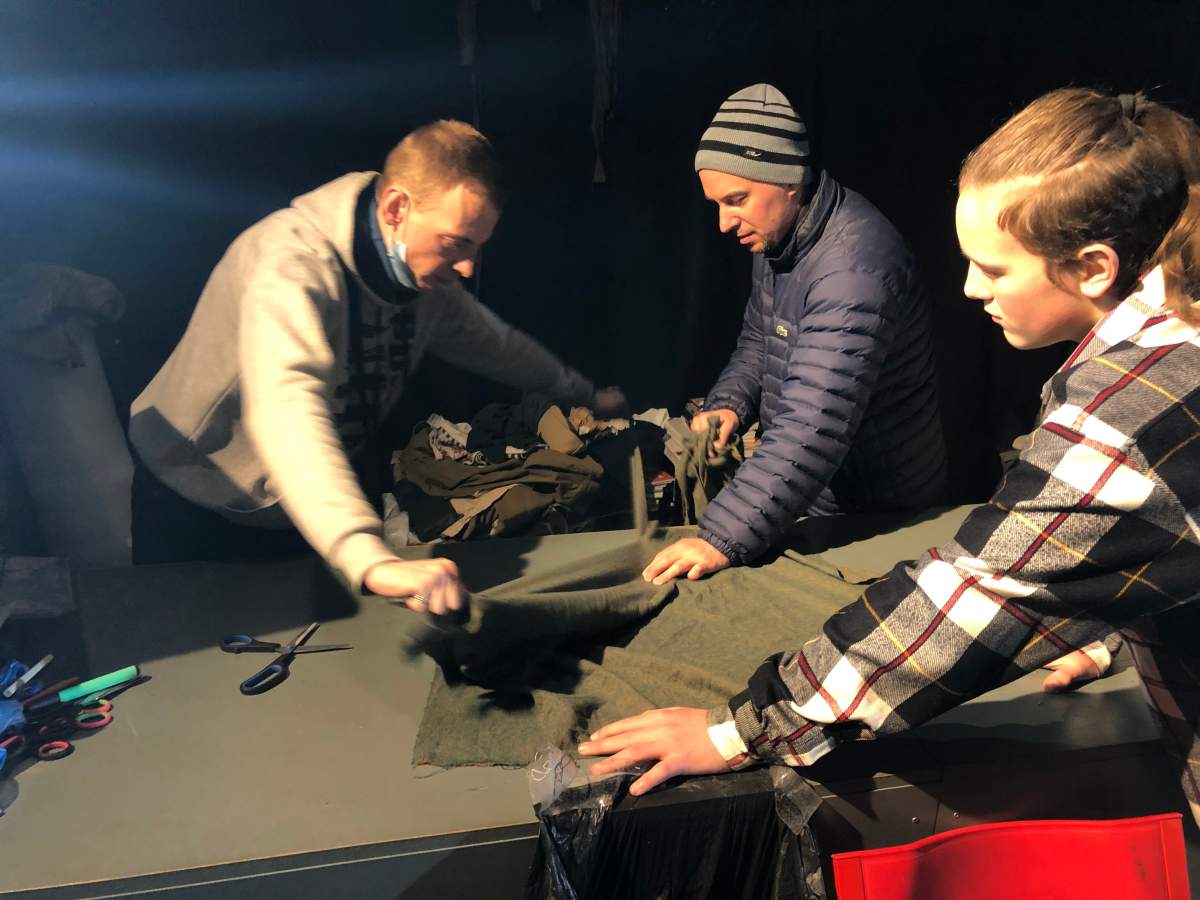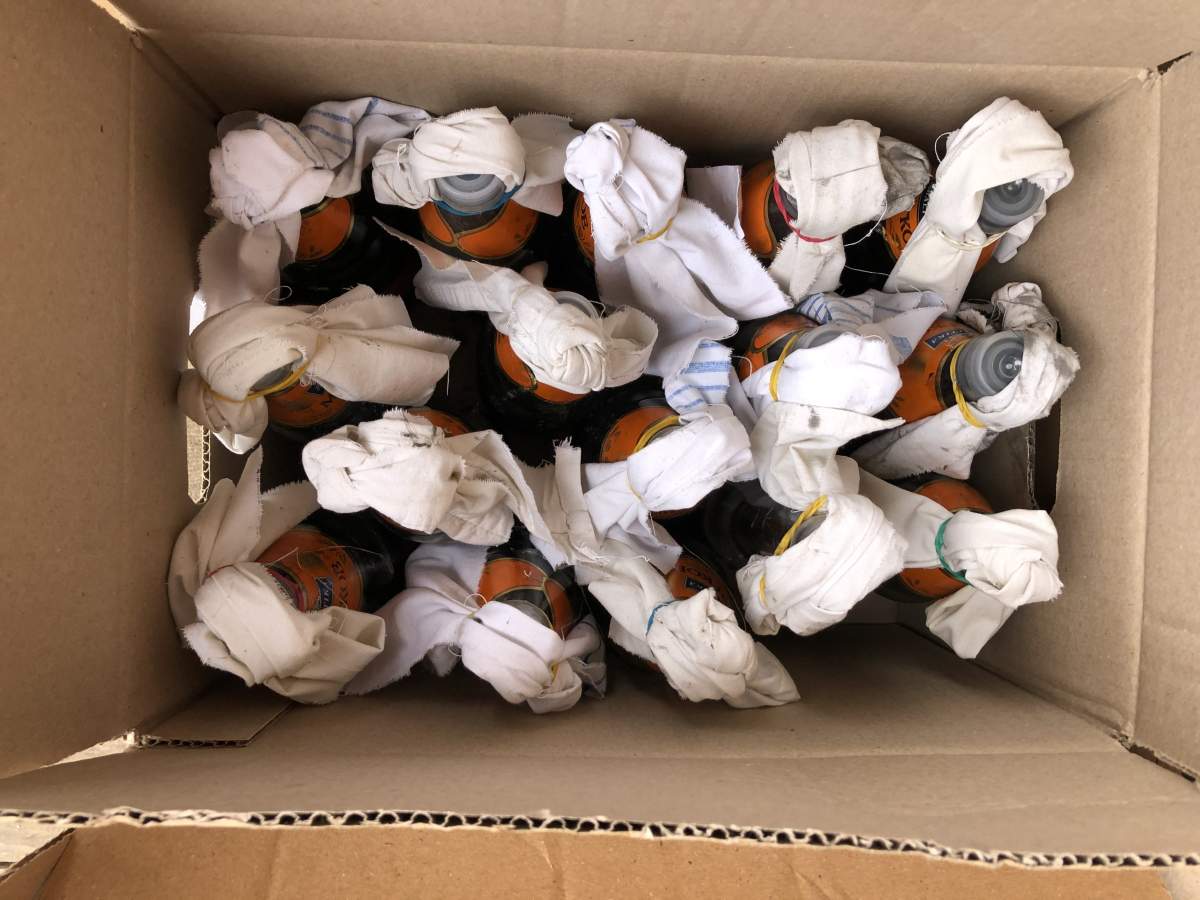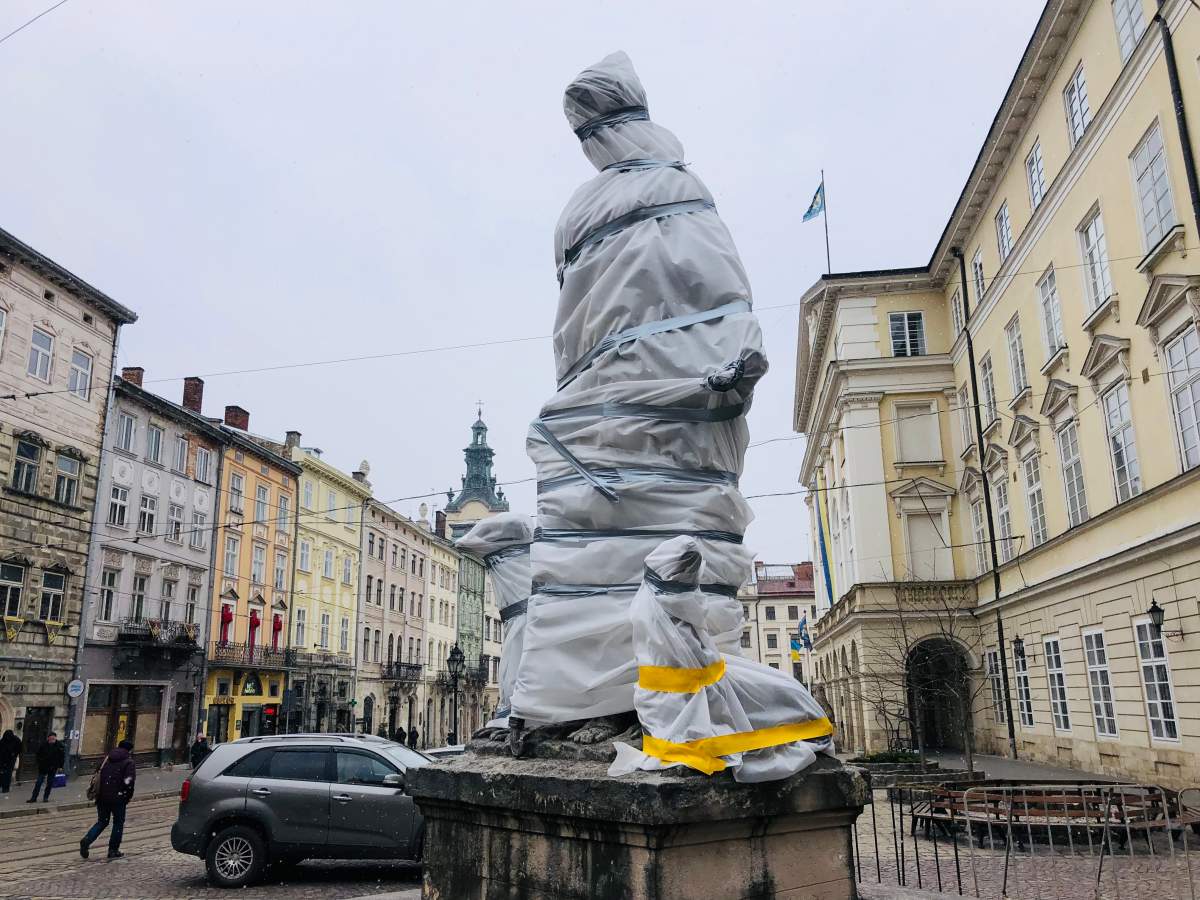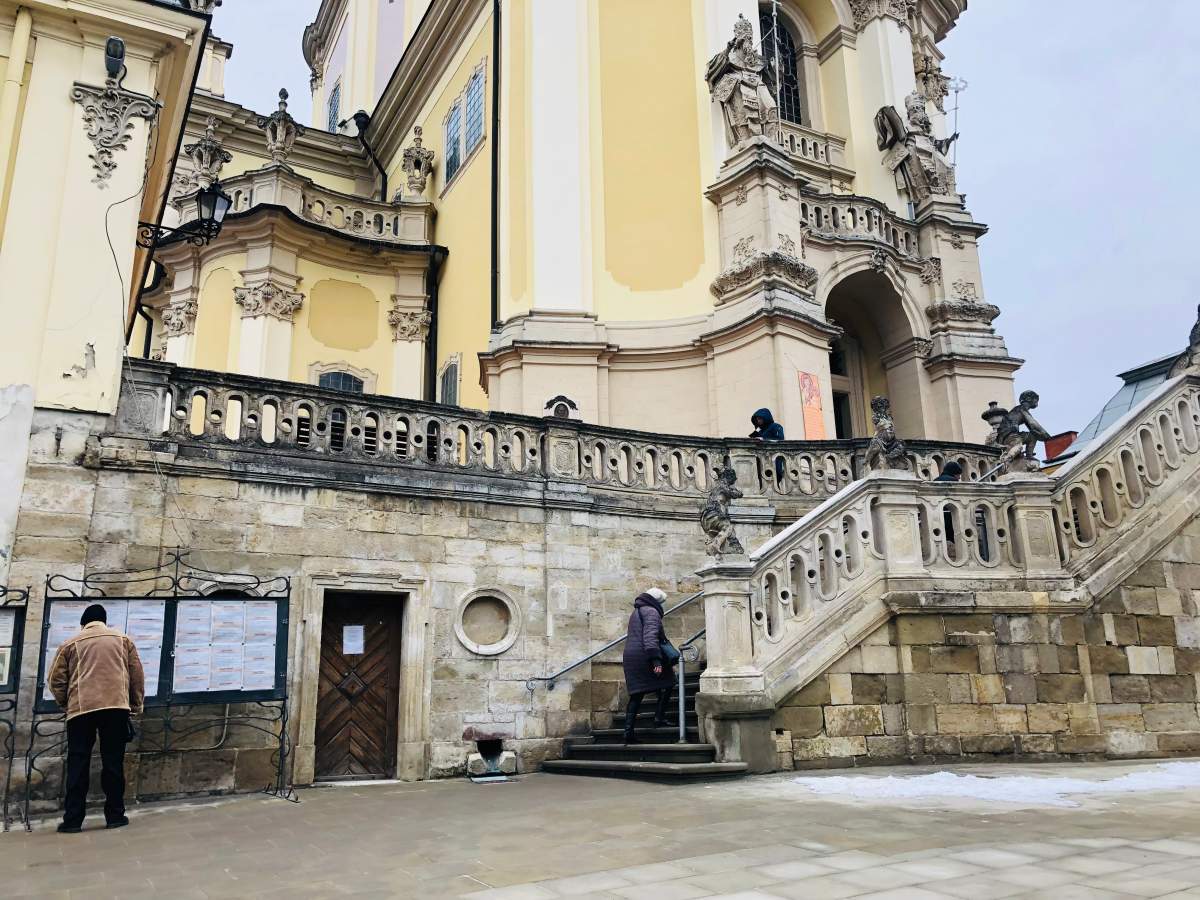The billboard a worker hung from a vehicle overpass in Ukraine’s westernmost city on Monday was defiant. “Russian soldiers go f–k yourself, the people of Lviv,” it read.

Outside a shop, an electronic sign displayed a middle finger to the Russian forces, while in another part of the city, boxes of Molotov cocktails were ready for street battles.
With Russian troops in Ukraine’s second-largest city Kharkiv, on the doorstep of Kyiv, and bombarding other centres, Lviv was fast becoming a key base in the country’s fight to guard its independence.
It’s a familiar role for the city of 720,000, which stubbornly resisted Russian and Polish occupation in the first half of the 20th century.
Nazi rule in 1941 gave way to Soviet rule three years later. The red-and-black banner of the Ukrainian Resistance Army, which fought both occupiers, still flies around Lviv.
Independence came in 1991 but Russian President Vladimir Putin wants Ukraine, and since his latest invasion began on Feb. 24, Lvivites have quickly united in their defiance.
They have been enlisting in the civil defence forces, training, sandbagging, digging fortifications, welding together metal tank barriers, and coming up with novel ways to protect Ukraine.
Valentine Vivcharchyn and Ivan Taranenko, residents of Kyiv who fled Russian shelling of the capital for Lviv, said they collected US$3,000 through an online fundraising drive on the weekend.
They spent the proceeds on ammunition and winter clothing, which they loaded into a van that transported the supplies to the front lines.
In a factory, Yurko Nazaruk was printing T-shirts that read “Fight Like a Ukrainian.” He said they would be sold internationally to raise funds for the fight against Russia.
“Every one of us is trying to help,” said Muroslava Semenko, who volunteers at one of the makeshift plants that have sprung up around the city to produce military netting.
Because of its proximity to Poland, Lviv is a natural gateway for goods and people arriving in Ukraine to help expel the Russian forces, and also for refugees on their way out.

Get breaking National news
The line of vehicles waiting to cross into Korczowa, Poland stretched for around four kilometres on Saturday. Hundreds were on foot, joining the 1.5 million that have fled the country.
But in Lviv, the mood was upbeat at a three-storey arts building made of heavy stone that was being used to manufacture meshing to disguise military equipment.

As Ukrainian rock music blasted over a stereo, a crowd of young volunteers tore donated shirts and bedsheets into strips, dyed them earthy colours and wove them into a lattice.
Watching the volunteers at work, it was impossible to imagine they could ever be conquered. Even when the air raid sirens sounded, they carried on, confident the old building would protect them, said Anastasia Vedernikova.
Shifts at the net factory began with the national anthem, and news updates were broadcast as they came in, said Vedernikova, a project manager at a software company, who co-founded the project.
The nets are made-to-order in a range of sizes and colours, depending on what they are meant to conceal, whether tanks or bunkers, making them less visible from the air.
A 21-metre net for a plane was just completed, said Vedernikova, a former Edmonton foreign exchange student.
“Yesterday, our soldiers came and took maybe 50 nets,” she said.
There are similar sites in schools and churches around Lviv, although the arts centre is likely the largest, with 100 volunteers at a time, she said.
The war has so far kept away from Lviv, as Russian forces appear to be focused on Ukraine’s more vulnerable north, east and south.
But the city has been readying itself for another invasion. Checkpoints made of concrete barriers and old tires have gone up on roads. Windows were being taped or boarded up, and monuments were wrapped in plastic, foam and duct tape.
Historic statues are everywhere in Lviv. The old city is a UNESCO World Heritage Site. The loss of life and culture under the strain of urban warfare could be devastating.
A volunteer net maker, Maria Koshlan, emerged from church on Sunday and said she just wanted life to go back to the way it was before Putin ordered his invasion.
She said the war was on everyone’s mind during mass at St. George’s Cathedral, an old baroque building that has survived Lviv’s history as a punching bag for foreign armies.
“We prayed that we will be able to forgive our enemies,” she said.
As he looked into the faces of his parishioners during morning mass, Father Paulo Drozyak said he saw the weariness of a nation that has withstood a dozen days of military assault.
“They were so tired,” he said.
It’s exhausting to be under attack, to have to fend off a neighbour trying to take your country from you, but Drozyak said his church was preaching the duty to lend a hand.
In times like this, it’s not enough to pray, he said. The church was telling worshippers to do whatever they could, like opening their homes to Ukrainians arriving from the east.
A door sign outside said to rise up, that Ukraine was the motherland and needed protection. The church was to begin wrapping its sculptures on Monday to protect them from Russian bombardment.
“We believe in God, and also we believe in our country,” Drozdyak said. “But we need to do something.… Believing without doing something, it’s nothing.”
Stewart.Bell@globalnews.ca
- Officials stress Calgarians must save water after Bearspaw main break sees no drop in usage
- Yukon-Alaska border rocked by 3 earthquakes in final hours of 2025
- Tariffs ‘still crippling,’ Canada’s cabinet makers say as increase paused
- This is when you’ll get GST tax credits and other federal rebates this year














Comments